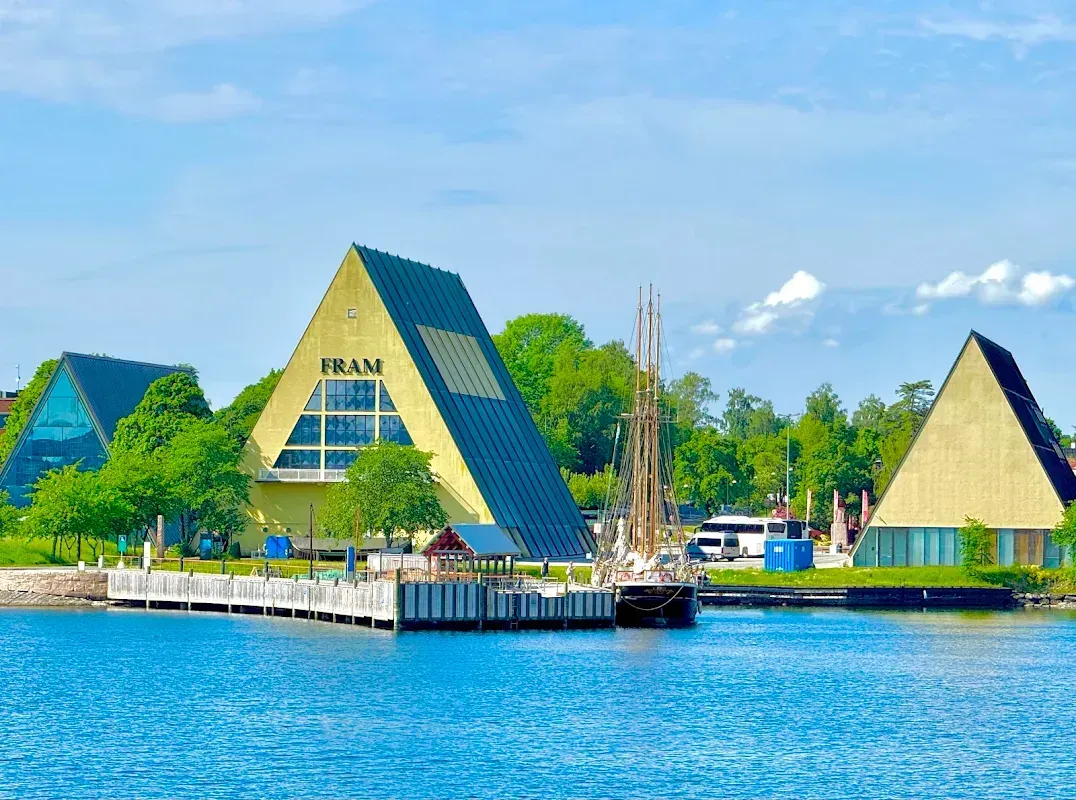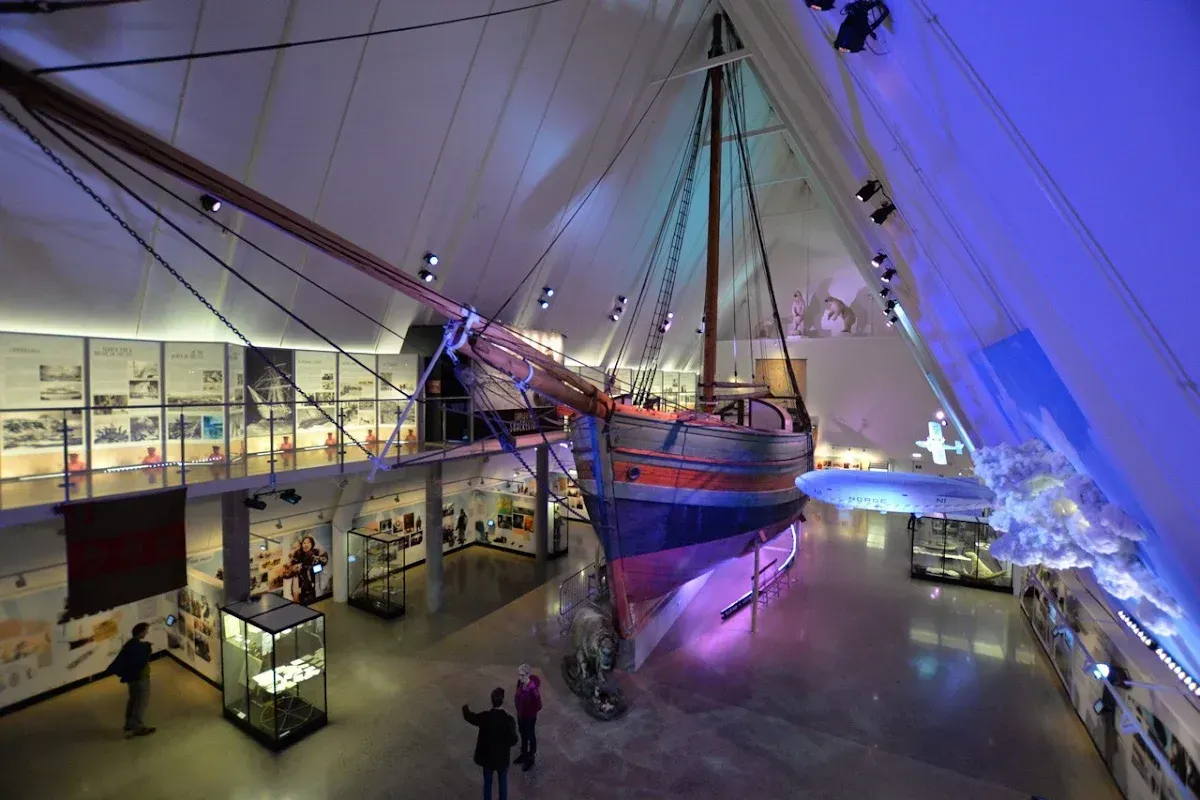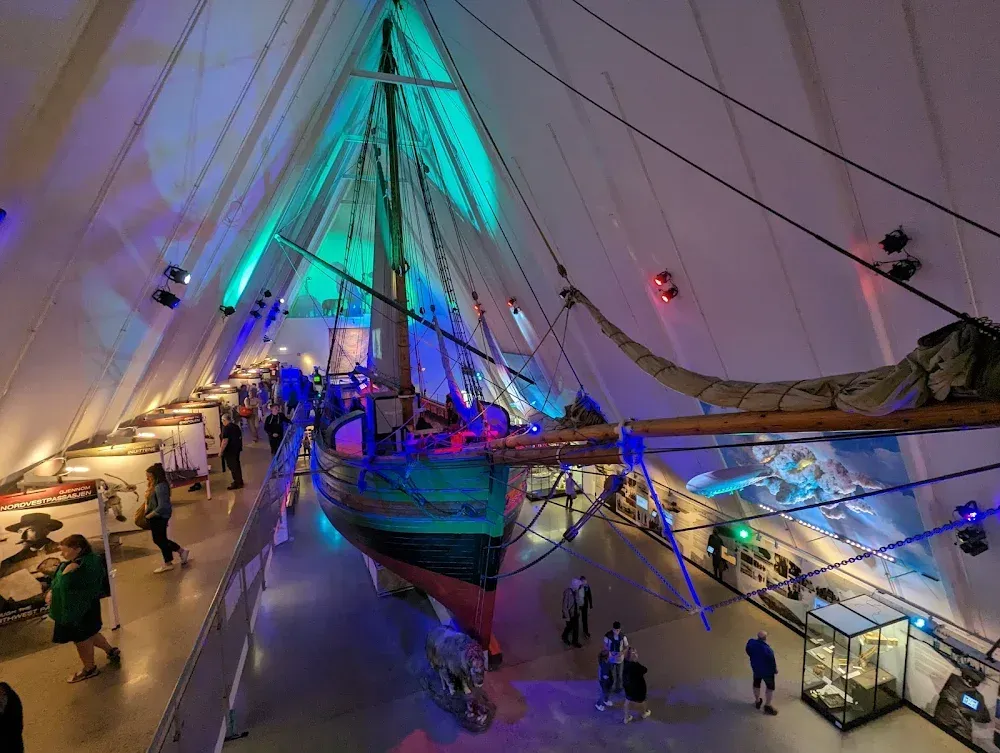Pole inside the museum: Fram, Gjøa and how Oslo became the capital of polar stories
Get ready for an unforgettable journey into the world of Norway's polar epic! It's not just dates and names, it's a tangible reality: the resin-scented wood of the Fram, the gleaming rivets of the Gjøa, the wind and the icy creaking in the drifting ship simulator. On the stunning Bygdøy peninsula in Oslo, you'll find a remarkable journey that brings this incredible history to life in a single, thrilling route — from the legendary Nansen and his groundbreaking "floating laboratory" to the momentous victory of Amundsen at the South Pole. This article is a must-read! Not only does it tell you what to see at the Fram Museum, but it also delves into how the Gjøa changed the world map, the immersive attractions that appeared in 2025, and how polar stories continue Norway's great maritime history (with a bridge to Tromsø and the convoy theme).

The Fram Museum has three main exhibits: the Fram, the Gjøa, and the stories of Nansen and Amundsen.
The main part of the museum is the original Fram. You can walk along the decks and corridors as if you were a member of the expedition. Next to it is the Gjøa, the first ship to sail through the Northwest Passage, with its own exhibition on the Arctic. There is a permanent exhibition about Antarctic explorers, the Northwest Passage, and Nansen as a scientist and humanist. This is a rare chance to see both the ships and the context of several great expeditions with a single ticket.
What exactly is the Polar Exploration Museum in Oslo, and how does it continue the story of maritime history?
We are talking about the Fram Museum on the Bygdøy peninsula in Oslo. It is a museum about the polar regions. It is in the "museum quarter", next to the Norwegian Maritime Museum and Kon-Tiki. This means it shows how Norwegians have used the sea over time, from building ships and life on the coast to the time of polar expeditions. You can visit this "cluster" in one day, and learn about the sea, technology and the people who switched from coastal boats to ice storms. You might also like to read the article #1 "Vikings..." which talks about how people became good at sailing.
Can you go on board the Fram and Gjøa?
Yes, you can visit the Fram. The cabins, wardroom and engine room will give you an idea of what life was like on an expedition and how the ship was laid out. The Gjøa is also open to the public after its restoration. There is a separate pavilion, viewing opportunities and its own exhibition about the Northwest Passage. If you love historical buildings, this is for you: old corridors, small beds and old diaries.
What makes the Fram a special ship and who built it?
The Fram was designed by Colin Archer to drift in ice. It has a strong hull, a special shape for moving through the water, and only a few parts that stick out. On board, there was even a windmill generator for electric lighting, and a 220 hp steam engine could reach speeds of 6–7 knots in calm seas. The ship was built in 1892, and since then it has become a symbol of science in the ice, from Nansen's drift to Amundsen's South Pole. The museum explains this through models, diagrams and a "dive" onto the deck.
What made Amundsen's 1910–1912 expedition so special, and what happened on 14 December 1911?
On that day, Amundsen and four friends became the first to reach the South Pole, reaching it first by a month ahead of the British Scott expedition. The museum shows how they got ready and what they did, from dog sleds and skis to the careful planning of the warehouses. The stands show the route of the Fram and the wintering of the Framheim base, while interactive displays show how the expedition worked and the "human factor" of its success.
Why is the Gjøa important in world history, and what can you see around it?
The Gjøa was the first ship to pass through the Northwest Passage in one trip (1903–1906). The crew spent two years in Gjoa Haven. There, they worked out where the North Magnetic Pole was and how it was moving. The Gjøa pavilion opened in 2013, and the ship was restored and made accessible to visitors in 2017. There are also exhibitions about the Arctic, the North Pole and navigation.
Which attractions in the museum allow visitors to really immerse themselves, and what new attractions will be available in 2025?
The most famous of these is the "Polar simulator", where you experience the cold and the sound of ice breaking as if the ship were trapped in ice floes. In 2025, the museum opened a 4D flight simulator of the N25 to celebrate 100 years since the Amundsen-Ellsworth expeditions. The seats move along with the images, and the voiceover explains why the explorers went into the sky. This is not a "carousel" but a careful reconstruction of historical episodes that helps you feel the risks.

How does the Fram Museum show the story of Nansen and what he did outside of his expeditions?
There are different sections about Nansen's work as a scientist and humanist. These include the study of the polar oceans, the drift of the Fram, and ice research. There is also information about Nansen's passports and his work helping other countries. This is important: you can see how the results of scientific expeditions were used to create a global humanitarian plan. The exhibits use a range of media, including documents and artefacts.
What details on board the Fram should not be missed?
Take a look at the wardroom and galley (food was very important to survival), and check out the navigation bridge, weather instruments and engine room. The display stands feature everyday items, from fur sleeping bags to repair tools. This "microcosm" shows that the success of an expedition depends on thousands of small decisions, like ventilation, where to store fuel, lighting and how to communicate between decks. Yes, you can walk around all the levels. The museum has deliberately left access at "real" dimensions.
Where can you experience the "single line of the sea" on Bygdøy, and what are the nearby attractions?
Across the road is the Norwegian Maritime Museum, which is full of information about boats and coastal culture. Next door is Kon-Tiki, which has a boat that was used by a man called Heyerdahl to travel to the Americas. You can walk to the future Museum of the Viking Age and Norsk Folkemuseum. This busy area shows how we have changed from clinker boats and trade caravans to polar ice expeditions.
How do polar science and technology relate to the tradition of wooden boats?
To understand where polar ships come from, it is useful to visit the neighbouring maritime museum and look at the Nordic clinker tradition. This has been listed as part of UNESCO's Intangible Cultural Heritage since 2021. This is not about copying the Fram's design, but about the maritime culture and knowledge that polar explorers relied on. This includes materials, seams, strength and repair. This means that expeditions are less "fairytale-like" and more engineering-oriented.
What are the N24/N25 and why is 2025 a year of updates at the museum?
In 1925, Amundsen and Ellsworth tried to reach the North Pole by air (N24/N25 seaplanes). To celebrate 100 years of these flights, the Fram Museum has opened a new permanent exhibition and the North Pole Flight Simulator, an interactive display explaining why the Arctic sky became a logical extension of ship expeditions. The updates help visitors see how the tactics and tools of polar travel changed between the two world wars.
Polar Oslo is an incredible place where the sound of ice crunching and the creaking of walkways seem more real than any story. The Fram and Gjøa are incredible ships that let you follow in the footsteps of the first explorers – how amazing is that?! They have incredible real decks where you can walk around and enjoy the experience. Norway is without doubt a strong maritime country, and it's really easy to see why here. You can see Archer's brilliant engineering skills and Amundsen's determination at the very same place! Come and discover your own polar history — with your eyes, ears and fingertips on the railings of the Fram.

We would absolutely love to hear your thoughts – please leave a comment below!
If you have any interesting photos, personal experiences or questions on the topic, we would love to hear them – please leave a comment! We'll definitely reply because we're making the most popular and useful blog about Norway!





1 comment
Log in to leave a comment